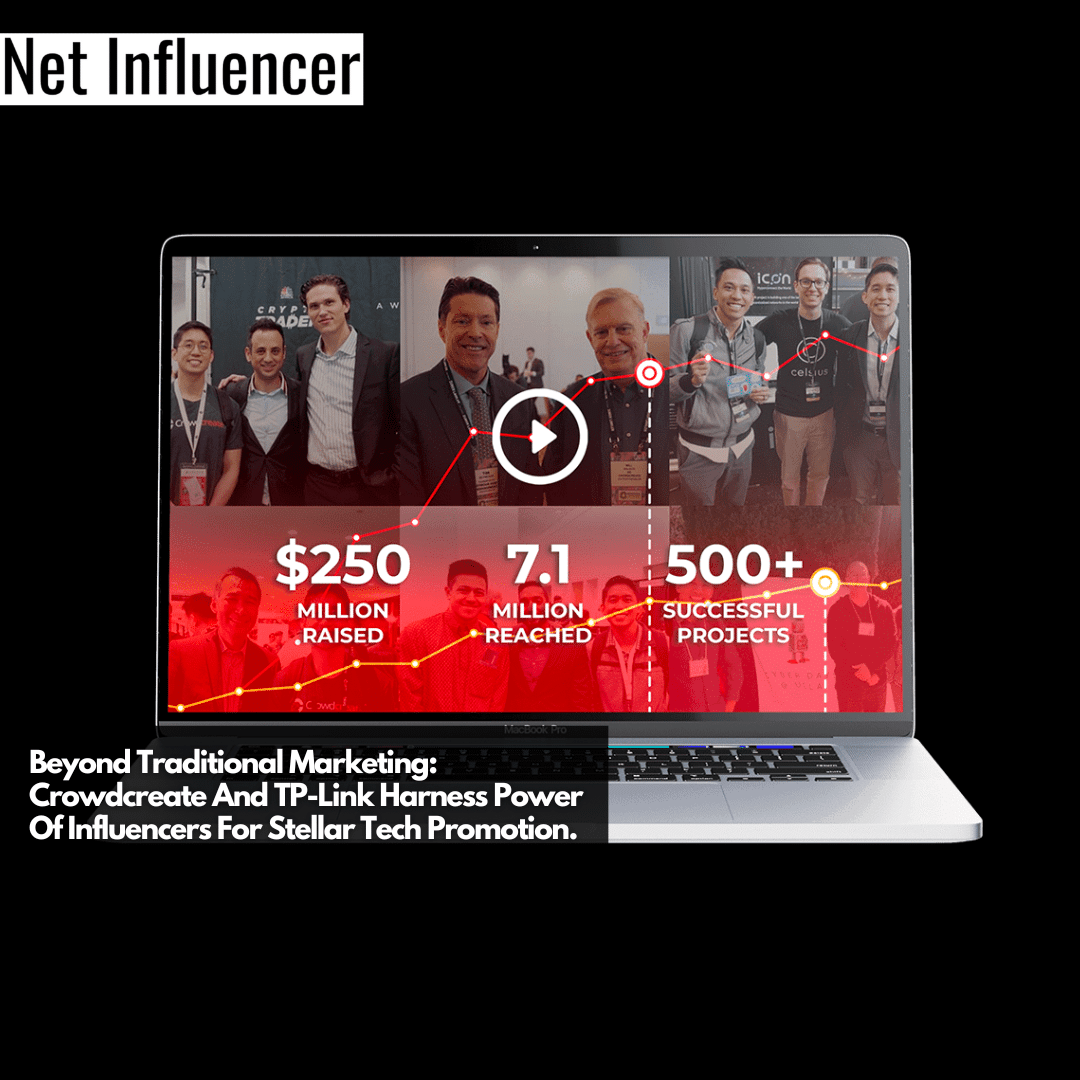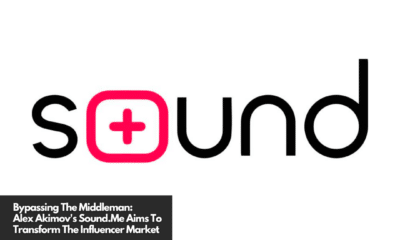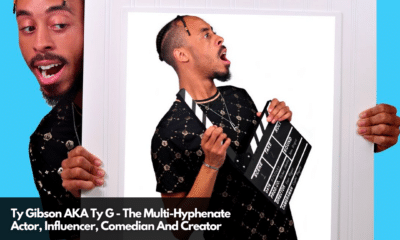Technology
Beyond Traditional Marketing: Crowdcreate And TP-Link Harness Power Of Influencers For Stellar Tech Promotion.
Crowdcreate, co-founded by Jeffrey Maganis, is a pioneering enterprise in the creator economy. With a decade-long presence in the consumer electronics sector, the company has made significant strides, marking its territory in global technology events from Europe to Asia.
At its core, Crowdcreate champions the spirit of innovation by assisting startups in navigating the competitive landscape dominated by tech giants. Leveraging the power of crowdfunding platforms like Kickstarter and Indiegogo, Crowdcreate empowers fresh ideas and facilitates their transformation into market-ready products.

Maganis remarked, “We’ve been attending some of the most influential electronics sourcing fairs. Throughout this journey, we’ve been fortunate to collaborate with several top-tier electronics brands that many have come to cherish.”

But what does Crowdcreate represent in the expansive ecosystem of the creator economy? Beyond its collaborations and trade show appearances, the company addresses a palpable need—one that became evident in the early days of crowdfunding platforms.
Reflecting on the inception of Crowdcreate, Maganis said, “Kickstarter, Indiegogo—they were nascent platforms back then. Startups, brimming with ideas and enthusiasm, found themselves in direct competition with industry giants. And amidst that landscape, we found our calling.”
Before tech aficionados across the world were introduced to the now-iconic Apple AirPods, Crowdcreate championed a groundbreaking device—the Dot Headset. Touted as the world’s smallest Bluetooth earbud at the time, this offering wasn’t just an impressive feat of miniaturization but a testament to the potent combination of innovative design and community engagement.
Detailing the journey of Dot Headset, Maganis shared, “In 2014, this revolutionary technology captivated many. The response was overwhelming—we managed to raise hundreds of thousands of dollars from a global community who shared our excitement for new-age gadgets and cutting-edge tech. The Dot Headset wasn’t just a product; it was proof of the transformative power of community.”
At the heart of Crowdcreate lies a mission that resonates deeply with the ethos of the creator economy: leveling the playing field. Where once startups might have been overshadowed by tech behemoths, the democratizing force of crowdfunding—and the community-driven approach of enterprises like Crowdcreate—offers them a chance to shine.
“It’s more than just introducing cool gadgets,” Maganis emphasized, “It’s about championing innovation and ensuring that even the smaller players can stand toe-to-toe with industry giants. In the evolving landscape of the creator economy, we’ve found our niche by empowering creators and startups with the tools and support they need to bring their vision to life.”

Crowdcreate’s collaboration with TP-Link
Crowdcreate’s collaboration with TP-Link, stands as a testament to the former’s mastery over influencer-driven tech promotions. Under the guidance of Jeffrey Maganis, Crowdcreate was instrumental in launching TP-Link’s innovative Color Night Vision camera and their advanced Wi-Fi networking system.
When questioned about how Crowdcreate’s history set the stage for such a partnership, Maganis delved into the company’s early foray into influencer collaborations. “Long before ‘influencer’ became a buzzword around 2014-2015, we had already begun fostering connections with prominent tech influencers like Unbox Therapy, Linus Tech Tips, and Michelle Pham,” Maganis remarked. “Our profound grasp over media, especially video content, coupled with our longstanding affiliations with these influencers, allowed us to stay ahead of the curve.”
Expanding on this thought, he detailed how over the past decade, Crowdcreate nurtured these relationships, adapting to the dynamic media landscape. Their strategy evolved, embracing emerging platforms like TikTok, Instagram Reels, and YouTube Shorts, which offered the perfect platform for their collaboration with TP-Link.
As Maganis further elucidated the role of influencer marketing in promoting TP-Link’s Wifi 7 Router, he emphasized the approach of merging education with entertainment. “Influencers, through platforms like TikTok, Instagram, and YouTube, offer a unique blend of information and engagement,” he shared. For TP-Link’s campaign, this translated into unbiased comparisons that highlighted the product’s speed, user-friendliness, quality, and unique features—like the distinctiveness of a color night vision camera when juxtaposed with a traditional one.
Crowdcreate’s methodology revolved around identifying influencers with a genuine interest in smart home technology. By zeroing in on trending topics like ‘Amazon finds’ and ‘home renovations’, they ensured that the promotion reached an audience primed for TP-Link’s innovations. “Our goal was clear,” Maganis concluded, “to utilize influencer platforms effectively, showcasing TP-Link’s products in a way that resonated with tech enthusiasts and everyday consumers alike.”
Beyond Traditional Marketing: Crowdcreate And TP-Link Harness Power Of Influencers For Stellar Tech Promotion.
The Influencer Strategy Behind the TP Link Campaign – Influencer Selection
Jeffrey says, “We’re in the midst of a strategic balance, ranging from micro-influencers to some of the more prominent names in the digital space. Our focus? To connect with influencers that our audience already trusts and respects. If you follow TP Link, you’ll recognize them. Many of these influencers are recognizable figures on platforms like YouTube and Instagram, delving into the realms of technology and smart home innovations. However, we’ve steered clear of major celebrities. Instead, our sights are set firmly on a specific audience segment: those keen on smart home tech, with platforms like Amazon and ViaSat talk piquing their interest.”
The emphasis on user-generated content (UGC) and short-form content points to a clear strategy. When quizzed about the choice of these mediums for TP Link’s diverse product range, Jeffrey explains, “It all boils down to trust and, importantly, buyer intent. When you juxtapose major celebrities with micro-influencers, an intriguing pattern emerges. Followers gravitate towards these micro-influencers precisely because they consistently touch upon niche areas—be it smart home technology or home improvement. This not only denotes trust but a clear intent to buy.”
He adds, “Our strategic approach has been deliberate. We’re not just casting a wide net hoping for generic brand visibility. Our goal is to engage, educate, and resonate with a potential buyer segment. The influencers we’ve chosen mirror TP Link’s brand ethos, making them the ideal partners to amplify our narrative.”
How Crowdcreate selected influencers who align with technology brands for maximum results
“In our journey at Crowdcreate,” Jeffrey says, “we’ve realized the pressing need to condense hefty technical details into short, punchy, and clear content. Platforms like TikTok have heightened this need. That’s where influencers come into play. We collaborate with the finest out there, those who can aptly convey the innovative strides of products, such as those from Tp-link, in a format that resonates with the everyday user.”
When broaching the topic of influencers, the question invariably leans towards the ‘who’—who are the faces, the voices behind these campaigns? “We strategically opt for a blend,” Maganis reveals. “From micro-influencers to some of the more expansive names. The key is to follow Tp-link. You’ll spot them. While the campaign is ongoing, many of these influencers are trusted figures in the YouTube and Instagram tech spheres. They discuss everything from the latest in technology to smart home innovations.”
He clarifies further, “Our primary focus isn’t on roping in mega-celebrities just for the sake of brand visibility. Instead, we’re honed in on a specific audience—those intrigued by smart home tech, platforms like Amazon and ViaSat talk. Consequently, the influencers we collaborate with are niche, each carving their own distinct space in this vast digital landscape.”
Crowdcreate’s ethos isn’t solely about forging partnerships; it’s about nurturing relationships anchored in authenticity. Jeffrey reflects on the company’s decade-long legacy, “Ten years ago, we were present at indie tech meetups and hackathons, immersing ourselves in communities long before it became the ‘in’ thing. That deep-rooted involvement has provided us with invaluable insights. Dive into the comment sections of these influencers’ videos, and you’ll discern a common thread—the genuine intent behind endorsing a product.”
Therein lies the differentiator, according to Maganis. Is the influencer’s endorsement driven by a paycheck or by genuine appreciation? “True brand alignment,” he asserts, “is discerned when an influencer, post a paid collaboration, continues to champion your brand. It’s not just a one-off. It’s a testament to the synergy between the influencer and the brand. That’s the authenticity we’ve upheld over the years. We’re in this for the long haul, fostering enduring bonds with influencers, envisaging numerous joint ventures down the line.”
The Influencer Strategy Behind the TP Link Campaign – Target Audiences and Measuring Success
“We’re eyeing the new-age consumers,” he explained. “The ones actively seeking fresh tech insights and swiftly digestible content on platforms reminiscent of CBS shows.”
Crowdcreate is pivoting towards influencers capable of delivering captivating snippets, akin to the “best of Vegas at CBS” showcase videos. Jeffrey elaborated, “Our primary audience constitutes tech-first individuals, often early adopters with the financial capacity to invest in these gadgets. Think of individuals entrenched in tech hubs across the globe.”
Every campaign thrives on measurable outcomes. Jeffrey outlined the key performance indicators (KPIs) for the TP-Link initiative. “We’ve allocated unique codes to each influencer and content creator. This dual strategy offers savings to their audiences and acts as a tracking metric for us.” Engagement metrics, including viewership, subscriber counts, and overall interaction, also hold significance.
“The long-term vision propels us,” Maganis shared. “We’re continually monitoring the efficacy of each influencer, aiming to refine our approach with every new product launch.”
Asked about preliminary outcomes since the partnership’s inception, Jeffrey responded with enthusiasm. “TP-Link’s established credibility resulted in one of our most effective campaigns. The swiftness with which influencers embraced and created content, primarily due to their existing rapport with the brand, was commendable.”
Predictions for the Future of the Creator Economy
Jeffrey is firm in his belief that influencer marketing and the creator economy are not merely fleeting trends. He posits, “All brands will not only see the necessity but will ultimately be creator-led. The allegiance and trust we place in brands, the manner in which we associate with them—it’s all converging around the personalities we follow in the media.”
Traditional advertising avenues like TV commercials or billboards, often associated with giants like McDonald’s, are steadily losing ground. Jeffrey observes a palpable shift in attention toward creators, the new-age celebrities of the digital domain. He says, “The way people engage with figures like Mr. Beast or even digital entities like Michela, the AI influencer, reveals a new dynamic in brand trust. It’s no longer solely about the product or service. It’s about the vibe, the sentiment—the emotional connection we forge with these influencers.”
The essence of this evolution in marketing strategy is about following the audience’s attention. The creator economy, as Jeffrey asserts, isn’t just about individual personalities. It’s an atmosphere, an ambiance that envelops followers, making them more receptive to a brand’s message. This isn’t just limited to humans either. AI personalities, brands, companies—all can wield this power as long as they resonate with the audience.
When prodded about the future of this rapidly morphing space, Jeffrey doesn’t shy away from making predictions. He notes the importance of maintaining authenticity, which could be jeopardized by the commodification of the creator economy. “The boldest prediction I can offer,” he begins, “is witnessing the creator economy becoming overly industrialized, almost like a factory line production.”
Dwelling on this further, Jeffrey offers a rather disconcerting revelation from his travels to Hong Kong and other parts of Asia over the past 12 years. “There are now facilities that I’d liken to factories for the influencer creator economy,” he explains. “Imagine spaces equipped with 20 or so cameras, all rolling simultaneously, capturing individuals discussing various topics.”
Such a scenario, while efficient, might sound the death knell for the authenticity that’s at the heart of the creator economy. If influencers become products churned out en masse from such factories, it could erode the trust and genuine connection that followers feel. Jeffrey cautions, “The risk is real. Over-manufacturing influencers could lead to an erosion of trust. And once trust is lost, regaining it becomes a herculean task.”
To navigate the future of the creator economy, brands and influencers alike must be wary of the siren call of mass production. The essence of this economy lies in its authenticity, the real connection between a creator and their audience. Sacrifice that, and the entire foundation might just crumble.
In the end, Jeffrey’s insights serve as both a roadmap and a cautionary tale. The creator economy holds immense potential, but its true power lies in its authenticity. As the landscape continues to shift, both brands and creators must stay true to their essence, lest they lose the very audience they seek to engage.





















